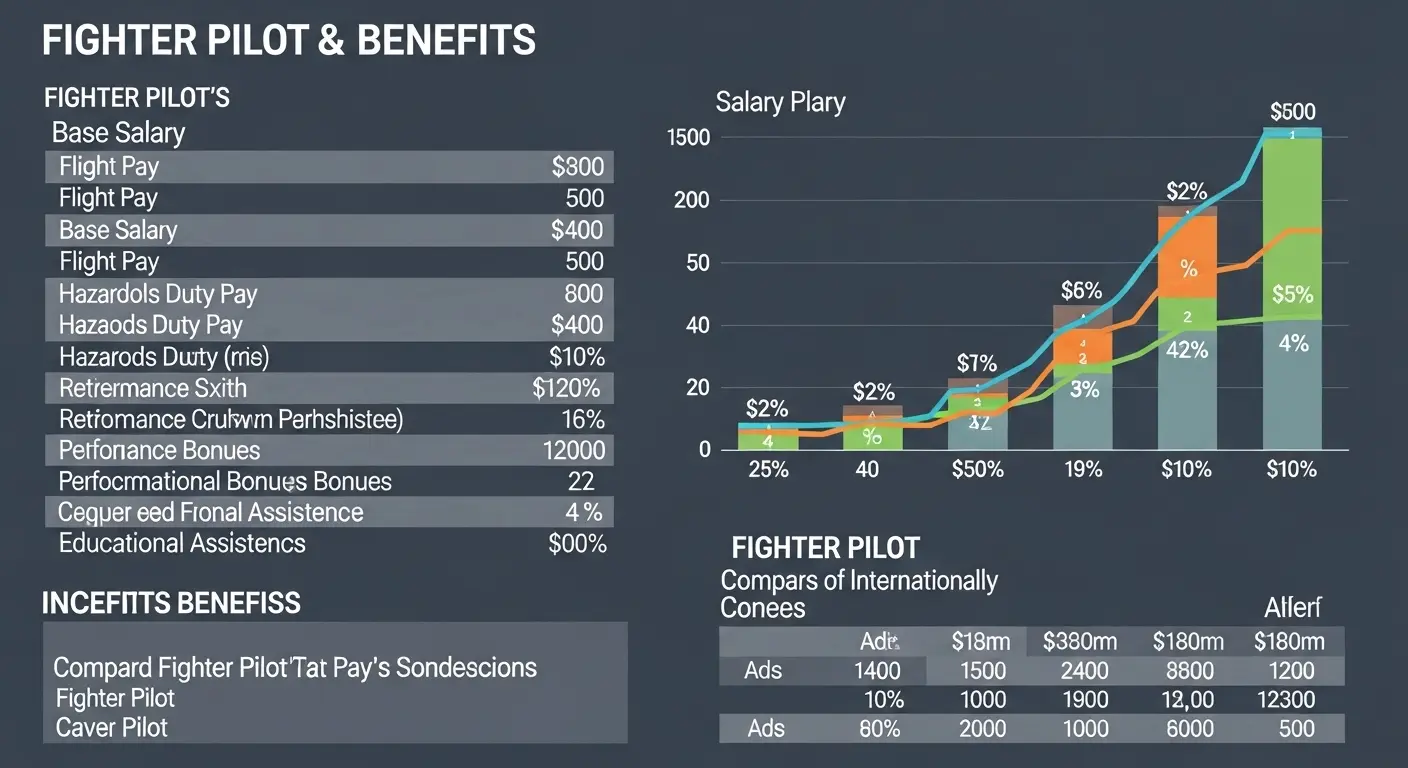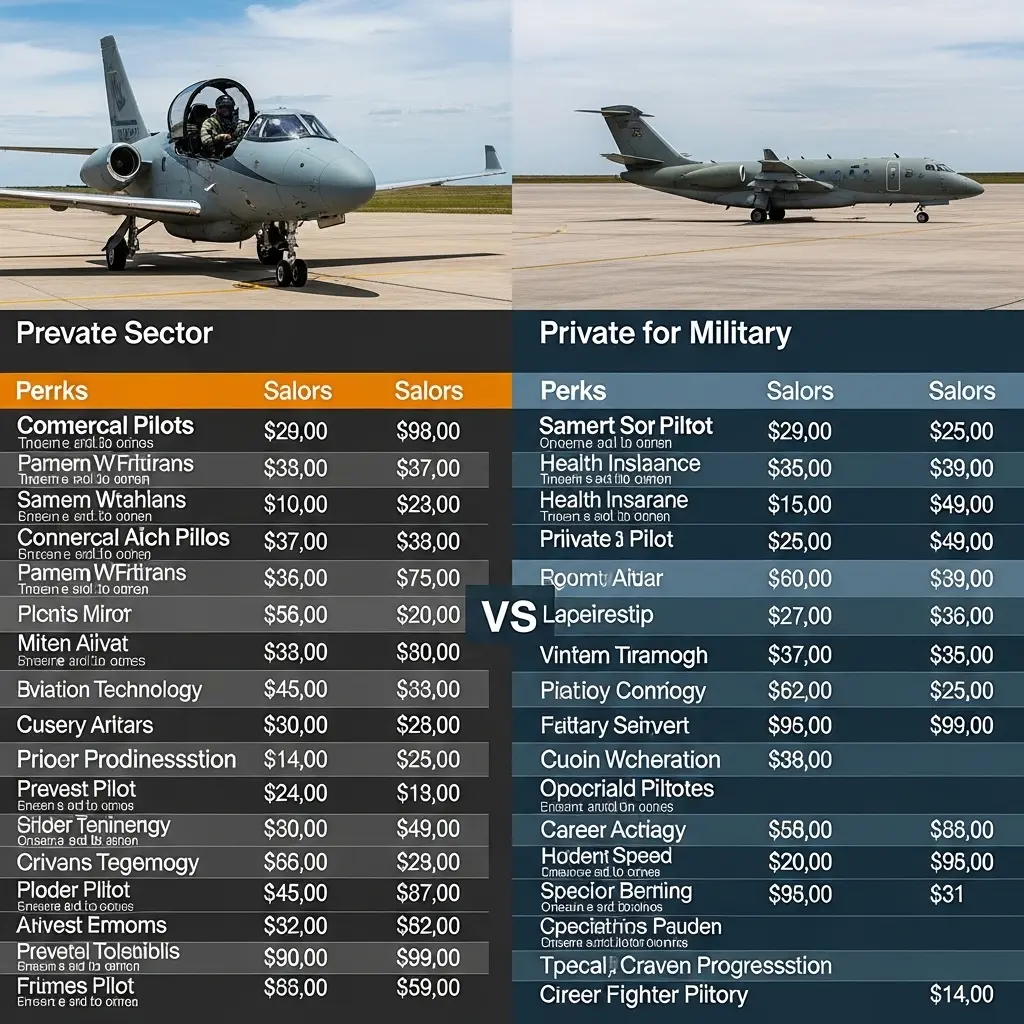Among the military’s most prestigious and skilled personnel are fighter pilots.
Although their work is tough, risky and exciting, it also offers excellent pay and benefits. This article provides a thorough analysis of the normal wage of a fighter pilot, the elements that affect it and the lifestyle that goes along with the position.

1. Fighter Pilot Salaries by Country
United States
| RANK | Monthly Salary (USD) |
| Entry-level fighter pilot | $3,600 – $4,300 |
| Mid-level, often with 8–16 years of service | $6,500 – $9,000 |
| Senior officers with high responsibility | $10,000+ |
Additional Benefits:
| Benefit | Details |
| Flight Pay | $150 – $1,000/month |
| Housing Allowance | Based on location and family status |
| Healthcare | Full medical and dental coverage |
| Retirement | Pension after 20+ years of service |
United Kingdom (RAF)
| RANK | Monthly Salary(GBP) |
| Entry-level fighter pilot | £27,000 – £35,000 |
| With several years of service | £50,000 – £80,000 |
Additional Benefits
| Benefit | Details |
| Pension | Military retirement scheme |
| Housing Allowance | Based on posting and family status |
| Flight Bonuses | Extra pay for flying duties and experience |
Russia
| RANK | Monthly Salary (RUB) | Approx. in USD |
| Entry-level fighter pilot | 80,000 – 120,000 RUB | $1,000 – $1,500 |
| Several years of service | 150,000 – 250,000 RUB | $2,000 – $3,500 |
China (PLAAF)
| Experience Level | Monthly Salary (CNY) | Approx. in USD |
| Estimated Salary | ¥15,000 – ¥40,000 | $2,000 – $6,000 |
Additional Benefits
| Benefit | Details |
| Housing | Subsidized or provided accommodation |
| Healthcare | Full medical coverage |
| Bonuses | Performance and flight-related bonuses |
Pakistan (PAF – Pakistan Air Force)
| RANK | Monthly Salary (PKR) |
| Entry-level rank after training | PKR 120,000 – 150,000 |
| Mid-career with leadership responsibilities | PKR 200,000 – 300,000 |
| Senior officers with extensive experience | PKR 350,000 – 500,000+ |
Additional Benefits
| Benefit | Details |
| Flying Allowance | Up to PKR 50,000 per month |
| Housing | Free accommodation or housing allowance |
| Medical Coverage | Full medical coverage for the pilot and family |
| Pension | Lifetime pension after retirement |
India (IAF)
| RANK | Monthly Salary (INR) |
| Flying Officer (Starting) | ₹70,000 – ₹1,00,000 |
| Wing Commander (Experienced) | ₹1,30,000 – ₹1,80,000 |
Additional Benefits
| Benefit | Details |
| Flying Allowance | Extra pay for active flying duties |
| Hardship Pay | Given for difficult or remote postings |
| Free Healthcare | Full medical coverage for pilot and family |
2. Factors Affecting a Fighter Pilot’s Salary

Beyond rank or title, a number of important criteria affect a fighter pilot’s pay.
The main factors are rank and years of service; officers at higher positions such as Wing Commander or Colonel, make substantially more money than entry-level officers.
Experience and flight hours are also important; seasoned pilots with mission or combat experience frequently earn more money, bonuses or special benefits. Earnings can also rise with specialized training in cutting edge aircraft or leadership positions.
Income is also affected by deployment and location. Pilots assigned to remote or high risk locations may be eligible for hardship allowances or hazard compensation. In many nations, military personnel are also eligible for retirement pensions, housing benefits and health insurance, all of which significantly increase the overall worth of their compensation package.
Last but not least, performance based bonuses like flight pay or retention incentives can increase income even more, particularly in competitive air forces that are trying to hold onto talented pilots. The entire compensation structure is shaped by the combination of all these factors.
Does a Fighter Pilot Earn
3. Additional Benefits
In addition to a competitive income, fighter pilots also benefit from a host of other perks that greatly increase their total compensation package. The flying allowance which is additional compensation given for active flying responsibilities, is one of the most well known. This sum can significantly increase the pilot’s monthly pay, albeit it varies based on the nation and rank.
Another significant advantage is free or highly discounted accommodation. When stationed elsewhere, pilots are frequently given living allowances or accommodations at military facilities. This significantly lowers living expenses. Additionally, the pilot and their immediate family receive complete medical, dental and emergency care, guaranteeing complete coverage for the duration of their service.
After 20 years of service, many air forces provide retirement pensions which offer lifetime financial stability. Additionally when deployed in high risk areas, fighter pilots may be eligible for hardship or danger pay. Benefits related to education including money for their children’s education or additional studies, are also typical.
Access to military canteens, transportation allowances, utility subsidies and recreational facilities are examples of additional benefits. In addition to increasing the financial rewards of the job, these benefits promote the health and happiness of the pilot and their family both during and after their service.
4. Do Fighter Pilots Earn More in Private Sectors

In fact, fighter pilots may occasionally make a lot more money in the private sector than they would while serving in the military after years of expertise and specialized training. Many fighter pilots go on to earn significant salaries as test pilots, commercial airline pilots, defense contractors, aviation consultants or flight instructors after they are retired or released from active duty. These positions come with fewer physically taxing routines, flexible scheduling and performance bonuses in addition to a higher base pay.
For instance, depending on the airline, type of aircraft and number of flight hours, a former fighter pilot employed by a commercial airline may make between $100,000 and $250,000 per year. Test pilots employed by aerospace companies or defense manufacturers, on the other hand, can be paid much more, particularly if they operate high risk or experimental aircraft, where bravery and ability are crucial.
It’s crucial to remember, though, that jobs in the private sector sometimes do not offer the advantages of military service such lifetime pensions, free housing, and complete healthcare coverage. Even though the profits could be higher, they are typically offset by less long term security benefits.
After serving, a lot of fighter pilots see the private sector as a lucrative next step, particularly when they can use their distinctive talents in in demand aviation positions.
https://forcescollege.com/salary-of-pilot-in-pakistan
Conclusion:
The pay for fighter pilots varies substantially by nation, with pilots in developed countries like the United States and the United Kingdom often earning more than their counterparts in underdeveloped nations. Base pay is only one aspect of the situation, though. A fighter pilot’s total pay is influenced by a number of criteria such as rank, years of service, location, flight hours and specialized training.
Fighter pilots receive a variety of benefits in addition to their pay, including housing, healthcare, retirement, flying allowances and performance bonuses. These benefits offer long term financial stability and greatly raise the total value of their pay.
Many people believe that serving in the military is not the end of their aviation career. Pilots frequently move to the private sector for higher paying positions after retiring or leaving active military, especially in test flying, commercial aviation and defense contracting. Private positions offer more flexible work arrangements and appealing cash potential, but they can not provide the same employment stability or benefits.
Q: Do flight hours increase a pilot’s salary?
A: Yes, more flight hours often lead to higher allowances and faster promotions.
Q: Is healthcare free for fighter pilots and their families?
A: In most countries, yes full medical coverage is provided during service.
Q: Do private sector jobs offer military-style benefits?
A: No, private jobs may pay more but usually lack military benefits like housing and pensions.
Q: Is the cost of living considered in fighter pilot salaries?
A: Yes, many countries offer housing and cost of living allowances to balance regional expenses.